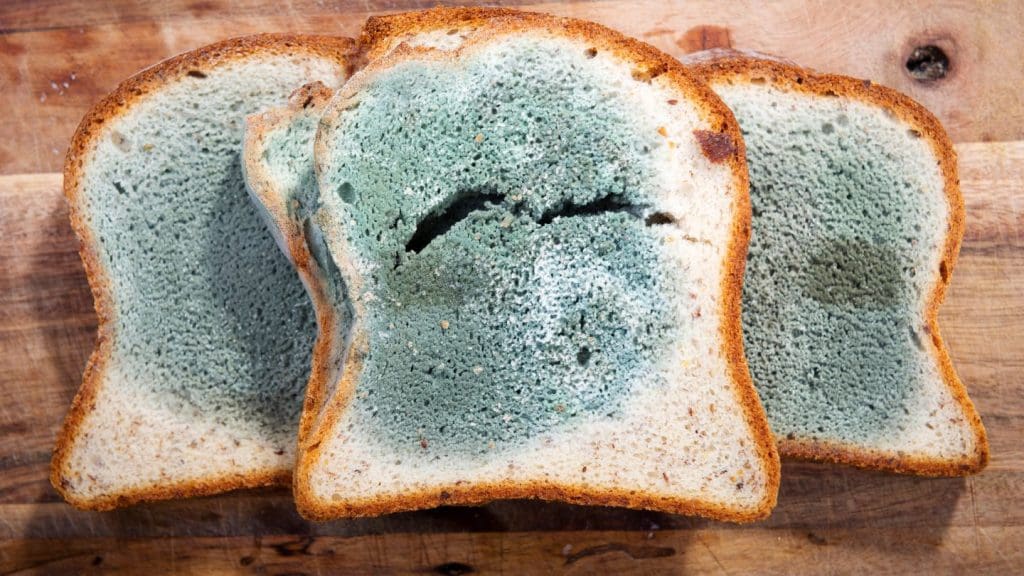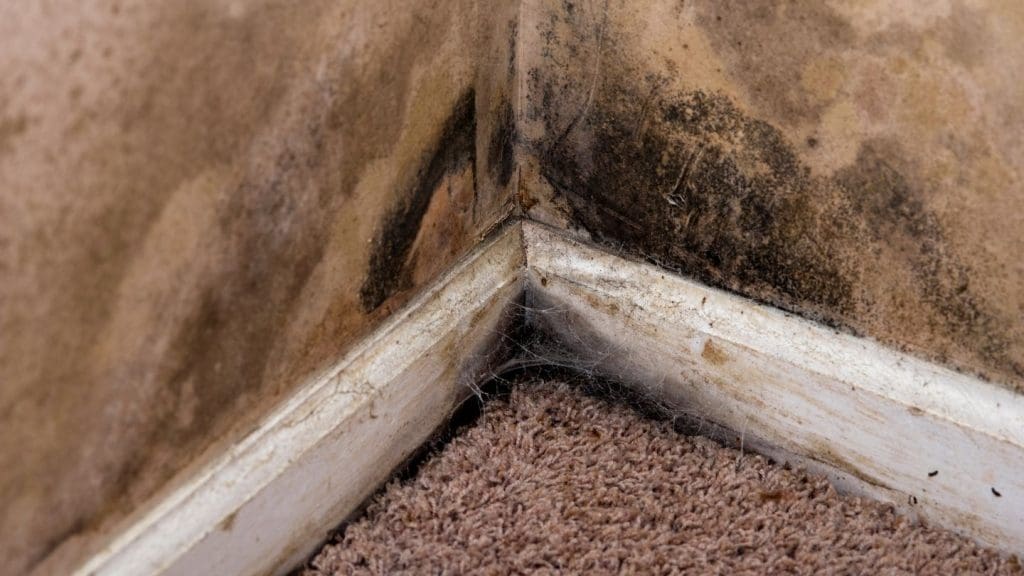Mold can appear in almost any environment that provides warmth, moisture, and organic material. Understanding the types of mold that grow indoors helps you recognize potential health risks and structural concerns before they worsen. Homeowners often wonder how many types of mold are there and which ones are most common in residential settings. While hundreds of mold species exist, certain types of mold in homes appear far more frequently, especially in basements, bathrooms, and kitchens. Here’s a closer look at the different kinds of house mold you might encounter and how they can impact your living environment.
1. Stachybotrys (Black Mold)
Also known as black toxic mold, Stachybotrys thrives on materials like drywall, wood, and paper that have been exposed to moisture for extended periods. This is one of the most dangerous types of mold in homes, as it releases mycotoxins that can cause headaches, fatigue, coughing, and respiratory irritation. Because of its toxicity and appearance, many homeowners wonder what makes this species so harmful. Learning more about what black mold is and how it develops can help identify it early and take immediate precautions. Black mold typically appears slimy and dark green to black in color.
Tip: Always hire professionals for removal, disturbing Stachybotrys can release spores throughout your home.
2. Alternaria
Among the most common household different kinds of mold, Alternaria grows in damp environments such as showers, under sinks, or near window sills. Its velvet-like texture and greenish-brown color make it easy to spot. Alternaria spreads quickly through the air, aggravating asthma and allergies.
Tip: Reduce indoor humidity and repair leaky fixtures to prevent its return.
3. Penicillium
Penicillium appears in shades of blue or green and spreads across fabrics, carpets, and wallpaper. Although some strains are used to produce antibiotics, others are harmful when found indoors. Prolonged exposure to this type of house mold can cause nasal inflammation and chronic sinus infections.
Tip: Maintain good ventilation and discard porous materials that can harbor spores.
4. Rhizopus

Rhizopus often develops on damp wood, paper, and upholstery. It thrives in warm, humid climates and can trigger allergic reactions and serious infections in those with weakened immune systems. Among the different types of mold in homes, Rhizopus is one of the fastest-growing species.
Tip: Keep humidity levels below 50% and use dehumidifiers in basements or laundry areas.
5. Aspergillus
Aspergillus spores are extremely common in indoor air, especially in HVAC systems, vents, and household dust. While some species are harmless, others can cause allergic bronchitis or lung infections. It’s one of the most common mold found in homes and can produce harmful toxins under the right conditions.
Tip: Have air ducts and filters cleaned regularly to minimize spore circulation.
6. Cladosporium
Cladosporium can grow in both warm and cool areas, often on textiles, wooden surfaces, and painted walls. It is known to cause skin irritation, sinus congestion, and coughing. Among the different kinds of mold in homes, Cladosporium is particularly resilient because it can thrive in cold air returns and HVAC units.
Tip: Regularly inspect behind baseboards and under carpets for hidden growth.
7. Fusarium
This mold grows quickly and spreads across wet carpets, insulation, and wallpaper. Fusarium prefers cold, damp areas and can cause eye or skin infections after prolonged exposure. While not as toxic as Stachybotrys, it still presents a significant health concern.
Tip: Replace water-damaged materials immediately to stop its spread.
Identifying Different Types of Mold in Homes

Homeowners often ask, what are the different types of molds and how can they be identified? Each mold species has distinct colors, textures, and growth patterns, but they all share one thing in common: moisture dependency. A musty smell, discoloration, or visible patches on surfaces are clear warning signs. Homeowners unsure about the signs of contamination can benefit from knowing the ways to tell if your house has mold in it, which include visible growth, unusual odors, and increased allergy symptoms. Understanding what are different types of mold helps determine whether to clean, remove, or call professionals for testing and remediation.
If you’re wondering what are the different types of mold in homes, experts categorize them based on their color (black, green, white, or blue) and toxicity levels. Identifying them early prevents costly repairs and health complications. These color variations can also reveal the stage or severity of contamination. Exploring the common colors of household mold helps homeowners distinguish between mild and potentially toxic growth.
How to Test and Remove Mold
If you suspect contamination, mold testing kits can help identify the different types of mould in houses, but laboratory testing offers more accurate results. For homeowners seeking clarity, understanding how to test for mold in your home can provide insight into whether professional inspection or DIY testing is appropriate for their situation. Professional inspectors use moisture meters, air sampling, and infrared imaging to locate hidden colonies.
While small patches can be treated with mild cleaning solutions, larger infestations should always be handled by certified remediation specialists who can ensure complete containment and safe removal. For minor surface contamination, especially on porous materials, it’s important to follow proper steps when cleaning. Knowing how to remove mold from wood helps prevent regrowth while preserving the material’s integrity.
Prevention and Long-Term Protection
Preventing mold growth requires consistent humidity control and routine inspection. Keep indoor humidity below 50%, ventilate high-moisture areas, and fix plumbing leaks immediately. Even seemingly minor water damage can introduce different kinds of house mold that thrive unseen behind walls or under flooring. Proactive maintenance and air circulation are your best defenses against recurring growth.
The Bottom Line on Mold in Homes
Mold isn’t just a cosmetic issue; it’s a health and structural concern that can escalate quickly if ignored. Recognizing the different types of mold in homes and their warning signs allows you to act early and protect your family’s well-being. Whether it’s black, green, or white mold, prompt identification and remediation are key to maintaining a safe living space.
When dealing with any types of mold in homes, expertise matters. Mold B Gone provides comprehensive inspection, testing, and remediation services throughout Georgia, ensuring your home stays mold-free. Our certified specialists use advanced tools to detect hidden contamination, manage removal safely, and restore air quality. Visit our website to learn more about professional solutions that keep your property protected from every form of household mold.
Frequently Asked Questions
How many types of mold are there in homes?
There are hundreds of mold species found worldwide, but only a few dozen commonly grow indoors. The most prevalent types of mold in homes include Stachybotrys, Alternaria, Penicillium, Aspergillus, Cladosporium, Rhizopus, and Fusarium, each with unique characteristics and health implications.
What is the most common mold found in homes?
Among the different types of mold in homes, Aspergillus and Cladosporium are the most widespread. These molds thrive in both warm and cool environments, appearing on surfaces like wood, fabric, and paint. Regular cleaning and humidity control help prevent their spread.
How can I tell what kind of mold is growing in my house?
Visual appearance can provide clues; black, green, or white discoloration, along with a musty odor, often signals growth. However, identifying the exact types of house mold requires professional testing, as different species can look similar but vary in toxicity and treatment needs.
Are all kinds of mold in homes dangerous?
Not all molds are highly toxic, but any indoor mold can pose health risks, especially to those with allergies or respiratory issues. Toxic species like black mold (Stachybotrys) can produce harmful mycotoxins, while others like Penicillium or Alternaria cause irritation and allergic reactions.
What should I do if I find mold growing in my house?
If you discover visible mold, avoid disturbing it and focus on finding the source of moisture. Clean small areas with mild detergent, but for larger infestations or recurring problems, contact a certified remediation specialist to inspect, contain, and safely remove all affected materials.

